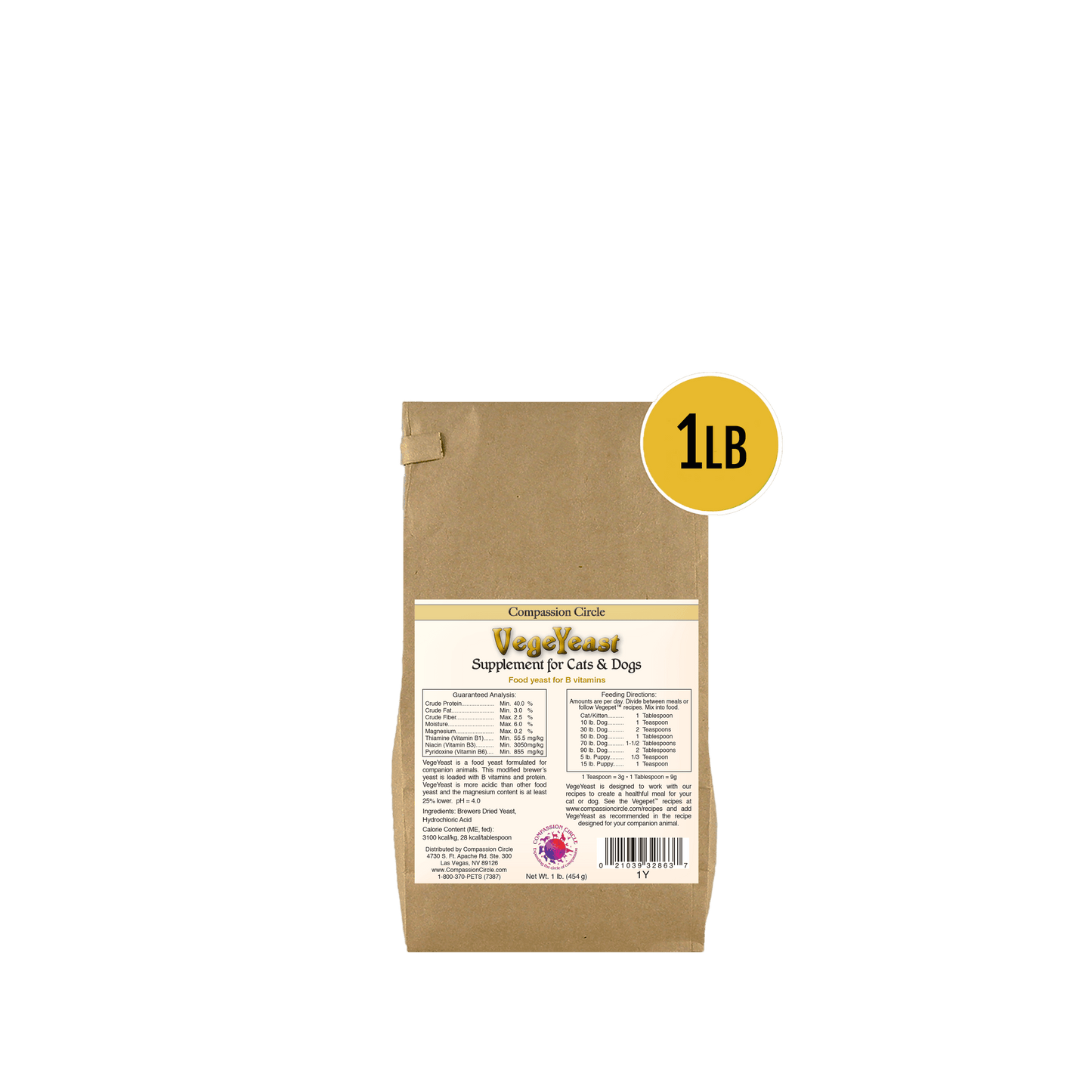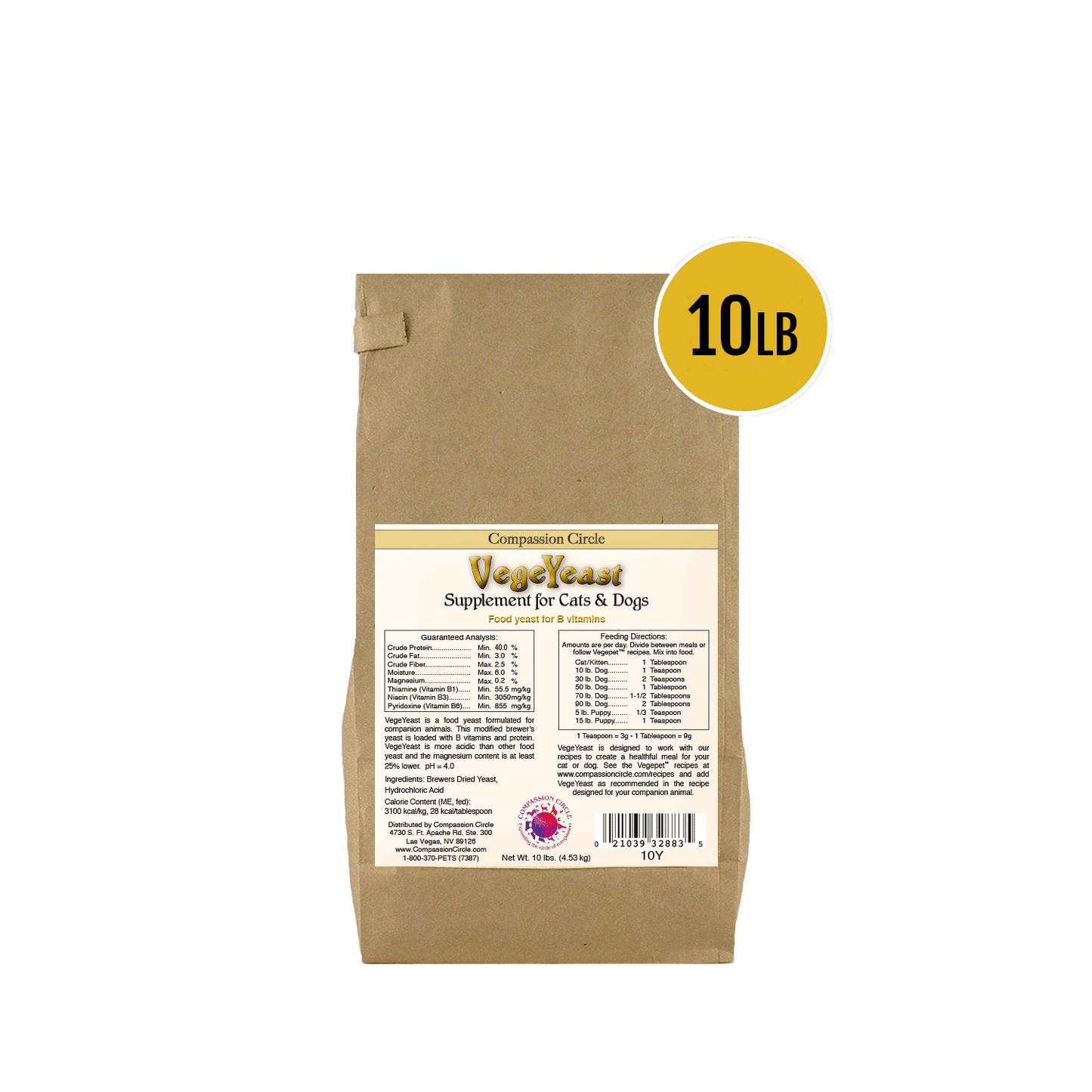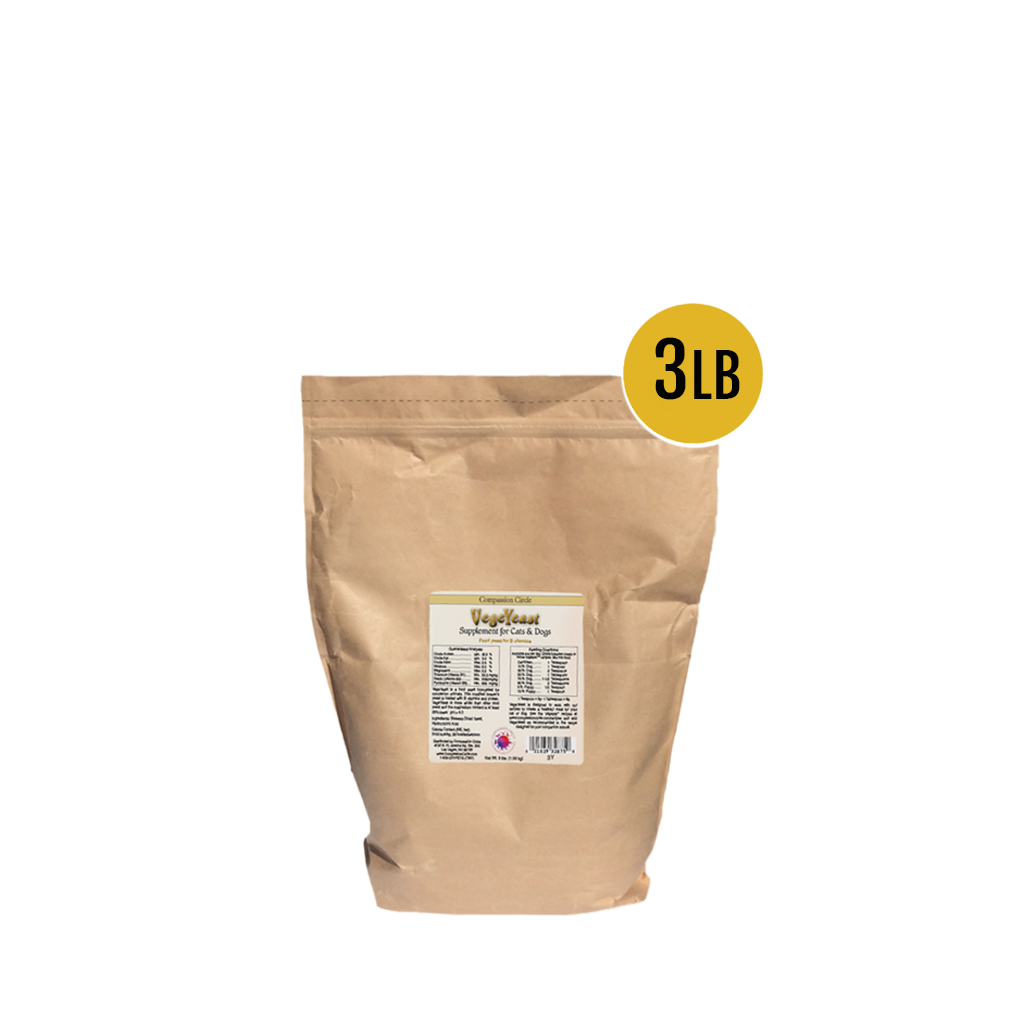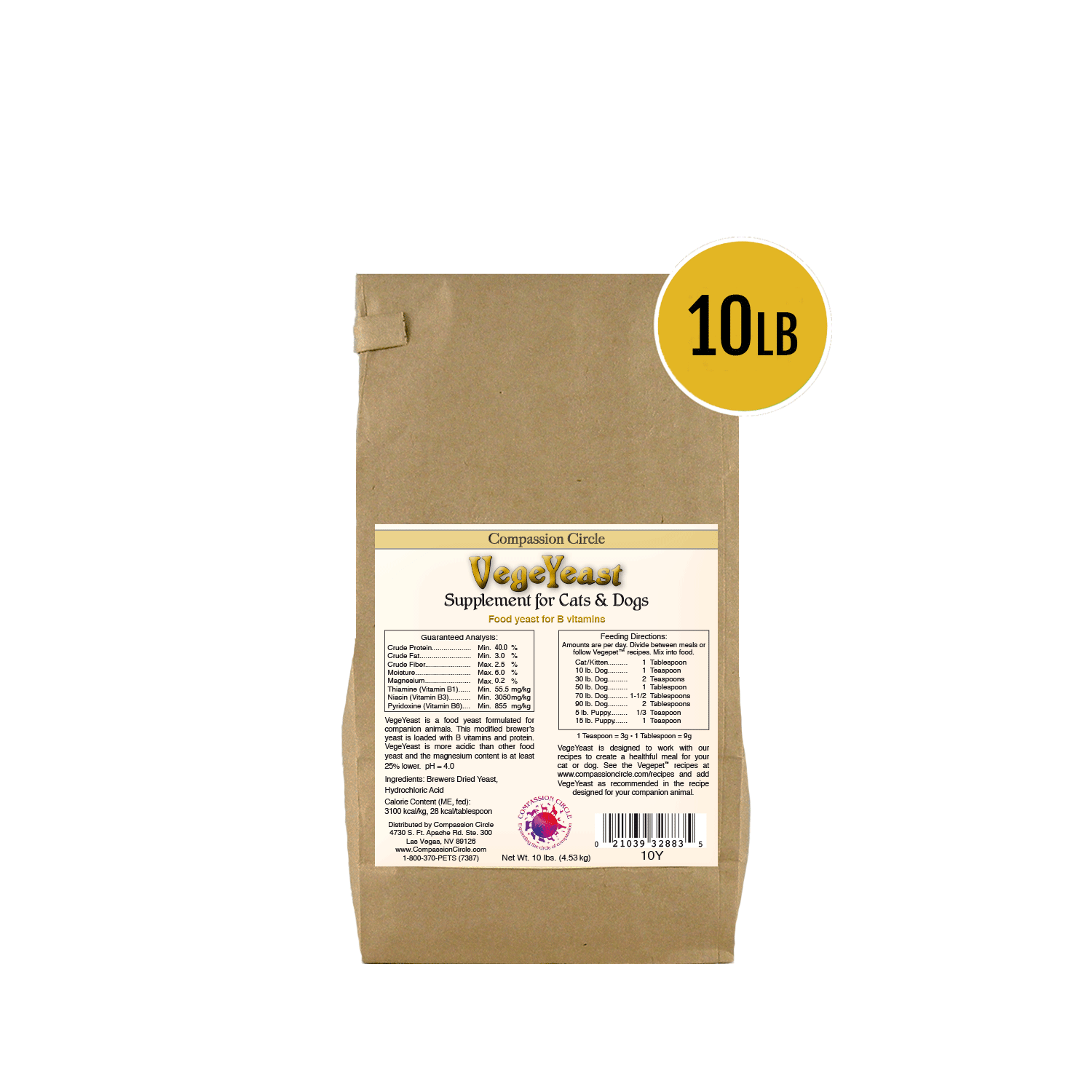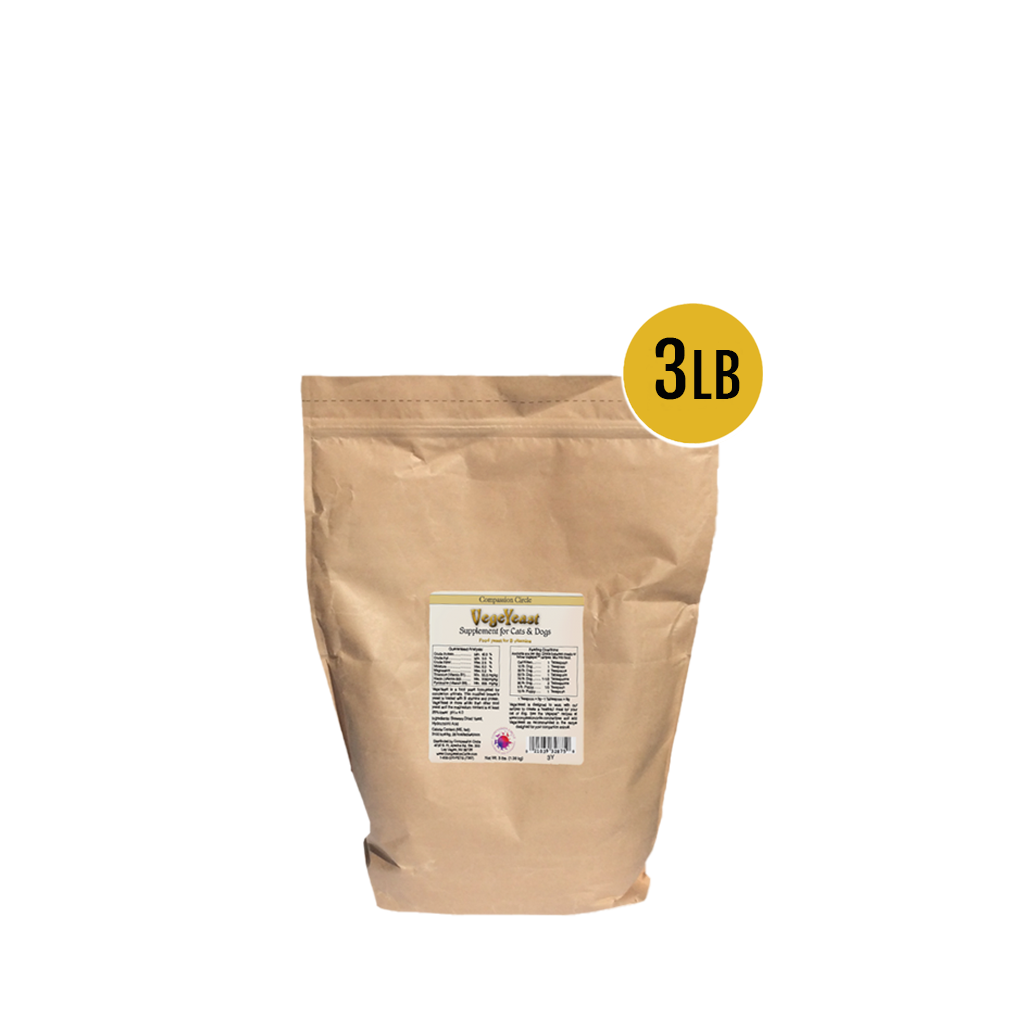VegePet
VegeYeast for Cats and Dogs
VegeYeast for Cats and Dogs
Helps with transitioning and supporting urinary health
Couldn't load pickup availability
VegeYeast helps make the transition to a plant-based diet since both cats and dogs love the flavor that VegeYeast adds to their food.
VegeYeast is a must-have for picky cats and dogs!
Formulated especially for companion animals, VegeYeast is a modified brewer yeast that is loaded with B vitamins and protein.
VegeYeast is an ingredient in all Compassion Circle recipes (see VegeDog, VegeCat, and VegePup pages)
We prefer getting essential nutrients from whole foods as much as possible, rather than adding individual vitamins in an attempt to compensate for inadequate meals. That’s why we recommend VegeYeast. It’s loaded with the important B complex water-soluble vitamins to support the nervous system as well as many other functions in the body. It is an excellent natural source of chromium and high-quality protein.
Furthermore, VegeYeast is valuable for urinary tract health because it is 100 times more acidic and is 35% lower in magnesium than regular brewers ' yeast or nutritional yeast. Two factors contribute to urinary health in pets: 1) a pet's urine that is too alkaline (opposite of acidic) and 2) a diet that has too much magnesium, which can lead to urinary tract problems. Therefore, adding VegeYeast, which is a natural acidifier (pH=4) and has less magnesium, is good for urinary health. To monitor the urinary health of your pet at home, use CheckUp kit for Cats and CheckUp kit for Dogs.
RECIPES
Please see individual VegePet PDF brochures for recipes with VegeYeast
- VegeYeast in VegeDog brochure
- VegeYeast in VegeCat brochure
- VegeYeast in VegePup brochure
DURATION
1 lb of VegeYeast will last:
- Cat: between 5 to 7 weeks.
- 10lb dog: about 5 months.
- 30lb dog: about 2.5 months.
- 50lb dog: about 7 weeks.
- Very large dog: less than 1 month.
- Small puppy: about 4 months.
- Large puppy: about 7 weeks.
Ingredients
Ingredients
Guaranteed Analysis
Guaranteed Analysis
Feeding Amounts
Feeding Amounts
Energy Density
Energy Density
Transition Tips
Transition Tips
Gradual transition is the key to a successful transition.
Start by mixing 1 part of new food and 4 parts of old food.
During the next 2 weeks, gradually increase the amount of new food to 100%.
Older pets and picky eaters may need longer time and extra care to completely switch.
Digestive Enzymes can be used to harden up stool during transition.
Nutritional Yeast has a cheesy flavour, which cats and dogs love.
More transition tips on this page.
Hydration
Hydration
Provide ample water to cats and dogs, and especially male cats due to their urinary anatomy.
Water aids with digestion and helps to avoid urinary issues. Water flushes out pathogens, heavy metals, and harmful drugs.
Soak dry kibble in water to make moist food with 1:1 ratio (1 part kibble to 1 part water), and wait for at least 30 min before serving.
Use distilled water whenever possible.
Incorporate wet canned food for better hydration. Mix wet food with dry kibble to increase moisture level.
Use an electric water fountain to entice pets to drink more water.
Care Instructions
Care Instructions
Store in a dark, cool place, tightly sealed.
For canned food: after opening, remove remaining leftovers and put into an airtight container for up to 3 days, keep it in the fridge. It can also be portioned out and frozen for later use or served as a frosty treat!
Brush your furry friends' teeth regularly.
Offer dental treats after moist food or add several dry kibbles to help scrape off the plague.
Monitor pH of your pet's urine - more info on this page.
Play with your pets daily to keep them active, healthy and happy 🧸
Subscription Info
Subscription Info
Most products on Vecado.com now offer a subscription option!
You can subscribe to receive your products regularly and save 5%
See more details about subscriptions here.
Shipping & Returns
Shipping & Returns
For shipping information, see here
